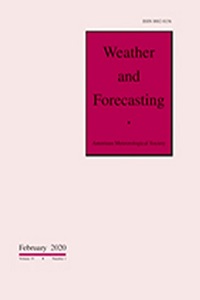Improving seasonal precipitation forecast for agriculture in the Orinoquía Region of Colombia
Canonical correlation analysis (CCA) is used to improve the skill of seasonal forecasts in the Orinoquía region, where over 40% of Colombian rice is produced. Seasonal precipitation and frequency of wet days are predicted, as rice yields simulated by a calibrated crop model are better correlated with wet-day frequency than with precipitation amounts in June–August (JJA). Prediction of the frequency of wet days, using as predictors variables from the NCEP Climate Forecast System, version 2 (CFSv2), results in a forecast with higher skill than models predicting seasonal precipitation amounts. Using wet-day frequency as an alternative climate variable reveals that the distribution of daily rainfall is both more relevant for rice yield variability and more skillfully predicted than seasonal precipitation amounts. Forecast skill can also be improved by using the Climate Hazards Infrared Precipitation with Stations (CHIRPS) merged satellite–station JJA precipitation as the predictand in a CCA model, especially if the predictor is CFSv2 vertically integrated meridional moisture flux (VQ). The probabilistic hindcast derived from the CCA model using CHIRPS as the predictand can successfully discriminate above-normal, normal, and below-normal terciles of over 80% of the stations in the region. This is particularly relevant for stations that, due to discontinuity in their time series, are not included in station-only CCA models but are still in need of probabilistic seasonal forecasts. Finally, CFSv2 VQ performs better than precipitation as the predictor in CCA, which we attribute to CFSv2 being more internally consistent in regards to sea surface temperature (SST)-forced VQ variability than to SST-forced precipitation variability in the Orinoquía region.

